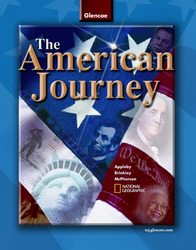The American Journey © 2007Chapter 14:
The Age of ReformWeb Lesson PlansIntroduction
In this chapter students read about the spirit of reform that swept across the United States beginning in 1820. Some of these reforms, such as voting rights and help for the mentally disabled, continue today. The abolitionist movement grew in numbers and strength in the years leading to the Civil War. In this activity students will take a closer look at important people and events in the abolitionist movement.
Lesson Description
Students will visit the Library of Congress's African American Mosaic exhibit. Here they can read about the development of the abolitionist movement, prominent members of the movement, and the many publications that dealt with slavery. After answering questions they will create a poster about the abolitionist movement.
Instructional Objectives- The learner will be able to identify important leaders of the abolitionist movement.
- The learner will be able to identify important books, broadsides, and newspapers of the abolitionist movement.
- The learner will be able trace the growth of the abolitionist movement.
Student Web Activity Answers- One of the earliest anti-slavery publications in the Library of Congress is a sermon by Jonathan Edwards, Jr., (1745-1802) in which he presented forceful arguments against ten common pro-slavery positions.
- He was one of a group of Africans who led a revolt on the slave ship Amistad in July 1839.
- William Lloyd Garrison, Arthur and Lewis Tappan, and others formed the American Anti-Slavery Society.
- Douglass used his lecture fees to help fugitive slaves and headed the Rochester station of the Underground Railroad.
- Students' posters will vary.
 | 




